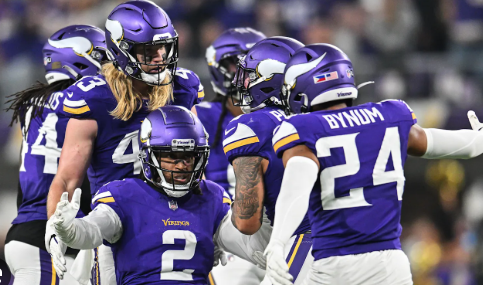
On Monday, the Minnesota Vikings took significant action by allowing the contracts of Sam Darnold and Stephon Gilmore to automatically void, meaning they will become unrestricted free agents (UFAs) when the new league year begins. In contrast, cornerback Byron Murphy and running back Aaron Jones have agreed to push their contract void dates back, allowing the team to maintain more flexibility. Understanding how void years work is crucial, as they play a vital role in a team’s salary cap management, affecting negotiations with impending free agents like the four players mentioned.
Void years, a strategy first popularized by the New Orleans Saints, are often used by NFL teams for salary cap purposes. They became particularly important in 2021 when the league faced a cap crunch due to a decline in revenue during the 2020 season. Teams that signed contracts assuming the cap would rise were forced to find ways to make room to pay players. In such situations, teams typically have two options: ask players to take pay cuts or offer extensions with large signing bonuses. However, both options come with their own challenges, leading teams to turn to void years as a middle ground.

Void years allow teams to push cap hits into future years without practically extending a player’s contract. This mechanism lets teams spread the financial burden of large contracts, such as signing bonuses, into future years without having to pay more upfront. For example, while the Vikings paid Darnold $10 million in cash in 2024, only $5 million of that counted against their cap, with the remaining $5 million deferring to the 2025 cap. This method is beneficial because it leverages the expected increase in the salary cap, meaning teams end up paying less in real terms compared to what they initially borrowed.
Once teams realized the benefits of void years, their use became widespread. Teams like the Philadelphia Eagles, San Francisco 49ers, Cleveland Browns, and Saints have adopted this practice, with nearly every NFL team using void years in some form. The idea behind these void years is to maximize cap space flexibility by pushing financial obligations into future years when the salary cap is expected to rise. The result is a more manageable way of handling large contracts without causing long-term cap issues.
In the case of Darnold, the Vikings had a five-year contract that included void years automatically scheduled to expire after one year. This meant that while Darnold’s deal appeared to be a multi-year commitment, it was designed to void after the first season, with the prorated signing bonus being spread across the five years. The void clause triggered earlier this month, releasing Darnold from the team and accelerating the remaining $5 million of prorated bonus money into the 2025 cap. This approach to contract structuring demonstrates how void years are strategically used to navigate cap restrictions while providing teams with flexibility during negotiations and roster management.
Leave a Reply